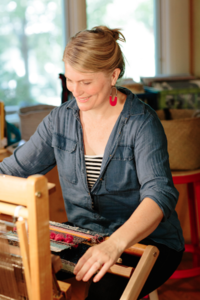
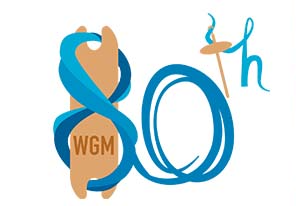
Join Our Story of Support
This week, we launch our fall campaign in the midst of a world of uncertainty.
Covid-19 is challenging WGM like never before, affecting what type of services we are able to provide and how people use and access them. From how we deliver classes to when and “where” our interest groups meet, there is not a single aspect of our guild that hasn’t been shaped by the pandemic. With reduced grant opportunities, fewer class offerings, and slower sales in the shop, WGM is facing a long road back to any sense of recovery.
However, what has come out of this uncertain time is a reminder of the resiliency and strength of our organization. This summer, through the endeavours of our Board, committees, and staff, the Weavers Guild reinvisioned how we serve our community and implemented a series of changes. Our most important efforts have been to reimagine our classes and pivot to digital programming, for the safety of our faculty and students.
This month, we piloted an online version of “Beginning Rigid Heddle Loom Weaving,” one of our most popular in-person classes. As students dropped by WGM to excitedly pick up their looms and select for their first project, the enthusiasm of these beginning students was evident. The glow of the anticipation of learning reminds us all why the guild and our mission to educate is so essential, especially now.
At this time, we must secure funds to ensure our operations can continue, including funds for employing our driven staff (who make our programming possible!), securing our classroom and store spaces, and yes, to support continued innovation. In recognition of the absolute need for support of the Weavers Guild, members of WGM’s Board of Directors will match up to the first $8,500 donated by our community.
Our goal is to raise $35,000 by November 20. We ask you today to make a donation in any amount to support the Weavers Guild of Minnesota.
With gratitude,
–Linda Soranno, Board President, on behalf of the Board of Directors
–Karin Knudsen, Operations Manager, & Betsy Konop, Education Manager
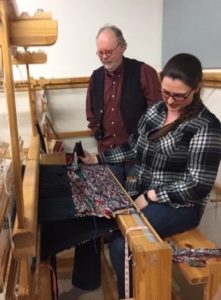
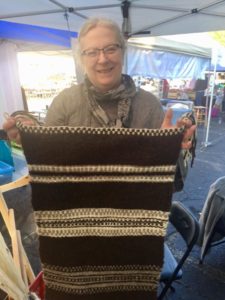

Online gifts can be made securely with a credit card or PayPal account by clicking the “Donate” button above.
Call 612-436-0463 to contribute over the phone between 11am and 3pm, Tuesday through Saturday. You may also mail your contribution to: Weavers Guild of Minnesota, 3000 University Ave SE., Minneapolis, MN 55414.
Share With Friends
Keith’s Story
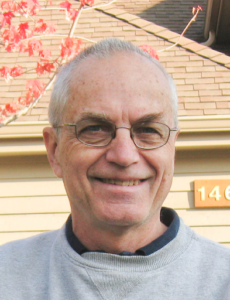 “What I really love to do is learn about some technique somewhere around the world. The latest one I’m studying is a band weaving technique that’s only practiced in a small region in southern Estonia bordering Latvia. There, the weavers use a supplementary weft technique that as far as I can tell is unique around the world. Banditos gives me a platform where I can share with other members what I’ve learned. It energizes me to try new techniques.” –instructor and Board member, Keith Pierce
“What I really love to do is learn about some technique somewhere around the world. The latest one I’m studying is a band weaving technique that’s only practiced in a small region in southern Estonia bordering Latvia. There, the weavers use a supplementary weft technique that as far as I can tell is unique around the world. Banditos gives me a platform where I can share with other members what I’ve learned. It energizes me to try new techniques.” –instructor and Board member, Keith Pierce
As a guild, our mission is to preserve and advance the arts of weaving, spinning and dyeing. Concerned that the skills of weaving and spinning would be lost in a post-industrial world, WGM’s founding members dedicated themselves to learning and passing on the specialized knowledge of these fiber arts, a practice that continues to this day. Today, weaving and spinning are thriving in our community, thanks to our members’ willingness to share what they know. Through formal classes, small group meetings, and person-to-person exchanges, members offer their expertise. There is always a new generation of learners who benefit from the deep knowledge held in our guild.
